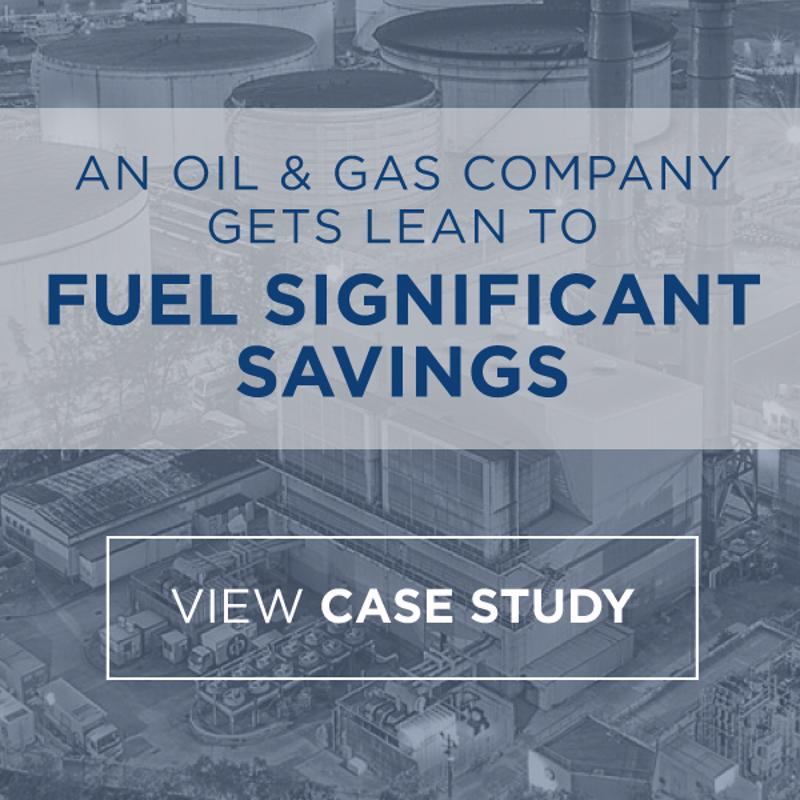-
Subscribe to Blog:
SEARCH THE BLOG
CATEGORIES
- Aerospace
- Asset Maintenance
- Automotive
- Blog
- Building Products
- Case Studies
- Chemical Processing
- Consulting
- Food & Beverage
- Forestry Products
- Hospitals & Healthcare
- Knowledge Transfer
- Lean Manufacturing
- Life Sciences
- Logistics
- Manufacturing
- Material Utilization
- Metals
- Mining
- News
- Office Politics
- Oil & Gas
- Plastics
- Private Equity
- Process Improvement
- Project Management
- Spend Management
- Supply Chain
- Uncategorized
- Utilities
- Whitepapers
BLOG ARCHIVES
- July 2025 (1)
- June 2025 (4)
- May 2025 (1)
- April 2025 (1)
- March 2025 (1)
- February 2025 (4)
- January 2025 (4)
- December 2024 (4)
- November 2024 (2)
- October 2024 (6)
- September 2024 (5)
- August 2024 (5)
- July 2024 (6)
- June 2024 (3)
- May 2024 (3)
- April 2024 (4)
- March 2024 (3)
- February 2024 (4)
- January 2024 (5)
- December 2023 (2)
- November 2023 (1)
- October 2023 (6)
- September 2023 (3)
- August 2023 (4)
- July 2023 (2)
- June 2023 (3)
- May 2023 (7)
- April 2023 (3)
- March 2023 (3)
- February 2023 (5)
- January 2023 (6)
- December 2022 (2)
- November 2022 (5)
- October 2022 (5)
- September 2022 (5)
- August 2022 (6)
- July 2022 (3)
- June 2022 (4)
- May 2022 (5)
- April 2022 (3)
- March 2022 (5)
- February 2022 (4)
- January 2022 (7)
- December 2021 (3)
- November 2021 (5)
- October 2021 (3)
- September 2021 (2)
- August 2021 (6)
- July 2021 (2)
- June 2021 (10)
- May 2021 (4)
- April 2021 (5)
- March 2021 (5)
- February 2021 (3)
- January 2021 (4)
- December 2020 (3)
- November 2020 (3)
- October 2020 (3)
- September 2020 (3)
- August 2020 (4)
- July 2020 (3)
- June 2020 (5)
- May 2020 (3)
- April 2020 (3)
- March 2020 (4)
- February 2020 (4)
- January 2020 (4)
- December 2019 (3)
- November 2019 (2)
- October 2019 (4)
- September 2019 (2)
- August 2019 (4)
- July 2019 (3)
- June 2019 (4)
- May 2019 (2)
- April 2019 (4)
- March 2019 (4)
- February 2019 (5)
- January 2019 (5)
- December 2018 (2)
- November 2018 (2)
- October 2018 (5)
- September 2018 (4)
- August 2018 (3)
- July 2018 (2)
- June 2018 (4)
- May 2018 (3)
- April 2018 (3)
- March 2018 (2)
- February 2018 (2)
- January 2018 (1)
- December 2017 (1)
- November 2017 (2)
- October 2017 (2)
- September 2017 (1)
- August 2017 (2)
- July 2017 (2)
- June 2017 (1)
- April 2017 (3)
- March 2017 (3)
- February 2017 (2)
- January 2017 (2)
- December 2016 (2)
- November 2016 (4)
- October 2016 (4)
- September 2016 (3)
- August 2016 (6)
- July 2016 (4)
- June 2016 (4)
- May 2016 (1)
- April 2016 (3)
- March 2016 (4)
- February 2016 (2)
- January 2016 (4)
- December 2015 (3)
- November 2015 (3)
- October 2015 (1)
- September 2015 (1)
- August 2015 (4)
- July 2015 (6)
- June 2015 (4)
- May 2015 (7)
- April 2015 (6)
- March 2015 (6)
- February 2015 (4)
- January 2015 (3)
CONNECT WITH US
Tag Archives: Environmental Impact
The electric car industry has seen its fair share of bumps in the road. In 2008, Tesla introduced the world to the Tesla Roadster, the first all-electric vehicle to use lithium-ion battery cells. On a single charge, it could travel roughly 200 miles. A mere two years later, the Nissan Leaf debuted, another automobile that entirely ran on electricity and the added benefit of not producing tailpipe emissions — a win for the environment. It maintained a lengthy streak as the top-selling EV nationally and globally.
Fast forward to today, consumers have a litany of additional EVs to choose from, including — but not limited to — the Hyundai Kona, Chevrolet Bolt EV, Tesla S, Karma Revera, BMW i3, and Mitsubishi iMiev. The growth in options is largely due to the ever-advancing state of technological improvements combined with state-of-the-art innovation.
All this being said, the journey to growth for participating automakers has been bumpy, beset by slow sales, manufacturing complications, and production delays. The latest example: Tesla, which is encountering struggles in unveiling the auto industry’s first electric pickup truck.
When word first came down that the Palo Alto, California-based automaker was in the process of developing a pickup capable of running on electricity, CEO Elon Musk didn’t hold back, calling it quite possibly the “coolest car” he’d ever laid eyes on, according to The Mercury News, a statement he made back in 2018, the same year the yet-to-be-named model was scheduled to arrive in dealerships.
However, in a reply to a questioner on Twitter, which asked Tesla’s CEO when the EV pickup truck would debut, Musk tweeted, “November most likely,” and it may not even be ready by then, industry insiders say.
“Producing EVs can be highly labor intensive and expensive.”
While the automaker remains tightlipped about what’s caused the delay, it may have something to do with manufacturing and development, as the process of producing EVs can be highly labor intensive and expensive. It starts with mining, as in order to run off of electricity, EVs require a number of different rare earth minerals, such as cobalt, nickel, silver, aluminum as well as lithium, which is used for storage cultivation ion batteries. But the rarity of these minerals make them expensive to extract for the metals and mining industry, which manufacturers must pay for when using them in development. Additionally, according to the Institute of Sustainable Futures, the supply of these minerals could eventually run out under a 100% renewable energy scenario that’s laid out in the Paris Climate Agreement.
“Batteries for electric vehicles are the most significant driver of accelerated minerals demand,” researchers for the study concluded in their findings.
Encumbering environmental standards
Another obstacle for car manufacturers are environmental restrictions. In the mid-1970s, following the oil embargo that led to a run on gasoline, the United States Congress passed the Energy Policy and Conservation Act. Within this piece of legislation was the Corporate Average Fuel Economy, or CAFE, which was a set of emission standards manufacturers had to abide by to make fuel-powered automobiles more energy efficient. CAFE standards have been updated on a fairly regular basis since then, with the government requiring mass produced vehicles sold in the U.S. to achieve certain miles-per-gallon milestones. As noted in Encyclopedia Britannica, the CAFE standard in 1985 was 27.5 mpg, which remain unchanged for many years. But by 2013 during President Barack Obama’s administration, the standard was raised to 54.5 mpg, a minimum automakers at the time were expected to reach no later than 2025.
Some of these standards have since been curtailed, but the costs manufacturers spend to ensure their supply abides by government protocols are considerable. These expenses are often passed on to consumers when they buy from dealerships. Indeed, according to a 2016 study conducted by international management firm Arthur D. Little Global, operating a car that runs on electricity costs owners approximately 44% more over a 20-year period than a vehicle with a regular internal combustion engine. That’s the equivalent of more than $20,000. Additionally, the difference in spending is even greater — 66% more — when comparing mid-size battery electric vehicles to mid-size internal combustion engine vehicles.
Sales growth on the slow side
This is part of the reason why electric-vehicle sales have largely failed to live up to expectations in terms of sales. As noted by Edmunds.com, in 2011, President Obama projected 1 million electric vehicles would be on the nation’s roads no later than 2015. Not only was that total not reached by then, it wasn’t until 2016 that the world’s 1 millionth hit the roads, according to Clean Technica. Business Insider reported there are 2.2 million registered for operation in the U.S., based on 2018 figures, but that’s with buyers often taking advantage of government subsidies. On the world’s roads, the total is 5.6 million, according to estimates from the Centre for Solar Energy and Hydrogen Research, a Germany-based nonprofit.
Both of these figures are encouraging for automakers, in particular, and the car industry in general, but they aren’t as high as many expected them to be a decade ago. And as a percentage of all the vehicles sold in the U.S., EV represent roughly 1%, according to multiple reports.
“The average electric vehicle in the U.S. sells for around $55,350.”
The selling price of electric cars is partly to blame, which manufacturers ultimately set in order to turn some kind of a profit. Based on the most recent statistics available from vehicle valuation firm Kelley Blue Book, the average electric vehicle in the U.S. — as of August 2019 — sells for around $55,350. That’s more than $30,000 higher than the typical compact automobile and a price tag that’s $38,500 more than the average subcompact car.
Limited mileage per charge
Another issue that’s proving to be a sticking point for car manufacturers is determining how to build and develop EVs so that they run longer on a single charge. Take the Nissan Leaf as a classic example, which as previously mentioned was once the best-selling EV in the nation, a title which now belongs to the Tesla Model 3, according to The Driven. As Popular Mechanics reported at the time, the Nissan Leaf could course only about 80 miles before needing to be plugged in again. That was a few years ago, but today, most electric cars get just 100 miles for each charge, based on calculations from the Institute of Transportation Studies.
There are mainly miles to go before the electric vehicle’s fate is ultimately determined, and much of it depends on the process improvements that manufacturers can implement to make EVs more appealing to new-car buyers and cheaper to produce. Whether its asset utilization, cost efficiency or sales effectiveness, turn to USC Consulting Group for industry expertise. We can make the road smoother to drive growth and prosperity. Please contact us today to learn more.
Sustainability ranks among the most discussed concepts of the past decade — and for good reason. Everyone from the blue-collar breadwinner to the high-powered executive is grappling with going green. Their respective decisions regarding sustainability carry immense weight within the global marketplace, where demand drives operational decision-making. Businesses within numerous sectors are feeling the effects of sustainability’s emergence in consumer and enterprise circles as a consequence. Chemical industry companies are among the organizations most susceptible to this development. Why? Many depend on industrial niches that produce products at risk for reduced usage or outright elimination due to the onward march of sustainability initiatives. Approximately 60% of all ethylene, the most widely manufactured organic compound in the world, per the American Chemical Society, goes toward the creation of polyethylene, the substance used to create sustainability’s mortal enemy: plastic. Petrochemicals essential to the production of petroleum face similar fates, as both businesses and consumers turn away from traditional energy sources and embrace solar and wind power.
These risks necessitate significant action. The chemicals industry should begin adjusting to these developing marketplace conditions and prepare themselves for an immediate future when the plastics and fuels that once characterized material society no longer generate the interest and related revenue they once did.
Consumers support sustainable alternatives
While marketplace variables like availability and price still carry immense importance among consumers, another factor has risen to challenge these once-bedrock value propositions: sustainability. Modern consumers are intent on preserving the environment and protecting themselves and their children against manmade ingredients and products they see as harmful. In fact, almost three-quarters would change their shopping habits to reduce their environmental footprints, while more than one-third are willing to spend more on products that deliver on claims of sustainability, according to researchers from Nielsen.
As mentioned above, discontinuing plastic use is at the center of many consumers’ personal sustainability efforts. Hundreds of millions of tons of plastic are manufactured annually, the Association of Plastics Manufacturers discovered. Food packaging manufacturers account for 40% of this material, while building materials makers produce around 20%. Organizations within the automotive, electronic, household materials, and sports and leisure markets are responsible for the rest. The plastics these businesses produce serve a purpose, of course. However, such items are not biodegradable and often find their way into natural environment, where they can do damage to animal and plant life. Additionally, some consumers wonder how plastics and the chemicals with which they are produced affect humans, particularly children. For instance, many have joined the crusade against bisphenols, or BPAs, in recent years due to preliminary medical research that indicates such plastic might cause health issues in children, per the American Academy of Pediatrics.
Consumers are similarly concerned about fossil fuel consumption and its potential impact on the natural world. In fact, more than 60% of Americans believe the widespread release of greenhouse gas is causing climate change, researchers for Yale University and George Mason University recently learned. As a result, support for environmentally friendly energy solutions, including wind and solar power, is growing, per Pew Research Center, which revealed that two-thirds of Americans support the expansion of sustainable alternatives to fossil fuel and coal. Many are taking action personally to de-emphasize fossil fuel by purchasing hybrid electrical vehicles, which have experienced significant sales growth since the early 2000s, according to the U.S. Department of Energy.
Businesses follow the money
With large numbers of consumers embracing sustainability, enterprises have no choice but to follow suit. More than three-quarters of consumers expect businesses to develop and deploy corporate sustainability initiatives, according to analysis from Nielsen. Even buyers from older generations — 65% of the silent generation and 72% of baby boomers, specifically — are on board with such programs.
This is why an estimated 82% of S&P 500 companies have corporate sustainability initiatives in place, per the Governance and Accountability Institute. These internal initiatives encompass a whole host of functions, including everything from back-office paper reduction to the use of biodegradable packaging. Some organizations have gone even further than this. For instance, Google, which operates numerous data centers and offices across the globe, pledged to swap all of its traditional energy sources for renewable alternatives back in 2010. The technology giant accomplished this goal in 2017. Facebook embarked on the same quest in 2013 and is expected to complete the transition to 100% renewable energy by 2020. Even oil companies are embracing sustainability due to pressure from environmentally geared investors, The Houston Chronicle reported.
Chemical companies take action
These developments have chemical companies searching for new operational strategies that will keep them solvent as consumer and enterprise attitudes toward nonsustainable materials grow more negative. How can such organizations survive without plastics and petrol? While there is no all-encompassing antidote, innovative players within the space are nearing long-term solutions by focusing on process improvement and change management.
Reporters for Bloomberg recently covered the emergence of industrial plastic recycling and the chemical industry’s role in its development. Approximately 60 chemical firms are working together to perfect a reuse workflow that allows shop floor teams to break down used plastic components — old food containers, for example — and reintroduce their molecular remnants into production processes. This closed circular strategy would not only reduce the volume of plastic material threatening the environment but also lend chemical companies invested in the production of the material new life. This is the kind of transformative process change businesses within the industry should pursue to ensure they remain viable after sustainability has transitioned from trend to status quo.
Chemical companies embarking on process improvements to address the emergence of sustainability could encounter trouble when pursuing such enhancements alone. Few operational stakeholders and executives have the bandwidth necessary to manage chemical manufacturing operations within an immensely competitive marketplace while also seeking out and implementing shop floor improvements. Fortunately, there is an effective solution to the time-management conundrum: partnering with a tried-and-true industrial consultancy like USC Consulting Group. We have been helping companies of every size, in virtually every sector, optimize their operations for decades, leveraging proven techniques and tools that ease change management and lay the foundation for growth.
Contact us today to learn more about our work.










